8 Must-See Public Art Projects Enlivening Art Basel
From Camille Henrot’s abstracted forms that tackle obsessive-compulsive personality disorder to Hassan Sharif’s jumbles of copper wires

The fair Art Basel in Basel, Switzerland, features a popular section that’s accessible to everyone: Parcours, which returns for its tenth edition with an exhibition that boasts 20 site-specific public art projects presented in and around Münsterplatz (Cathedral Square). On view from June 10 and running through the end of the fair on June 16, “The Impossibility of Being a Sculpture” has been curated by Samuel Leuenberger, the founder of the Swiss nonprofit exhibition space SALTS.
“In the civic domain, sculpture is much more than its concept: It is an active participant and a mischievous one at that,” declared Leuenberger in his curatorial statement. Ranging from Camille Henrot’s abstracted figurative forms that tackle obsessive-compulsive personality disorder to Hassan Sharif’s jumbles of copper wires that strangely form a figure, we’ve selected artworks that are certain to make the most committed flaneur, or urban ambler, stop dead in their tracks.
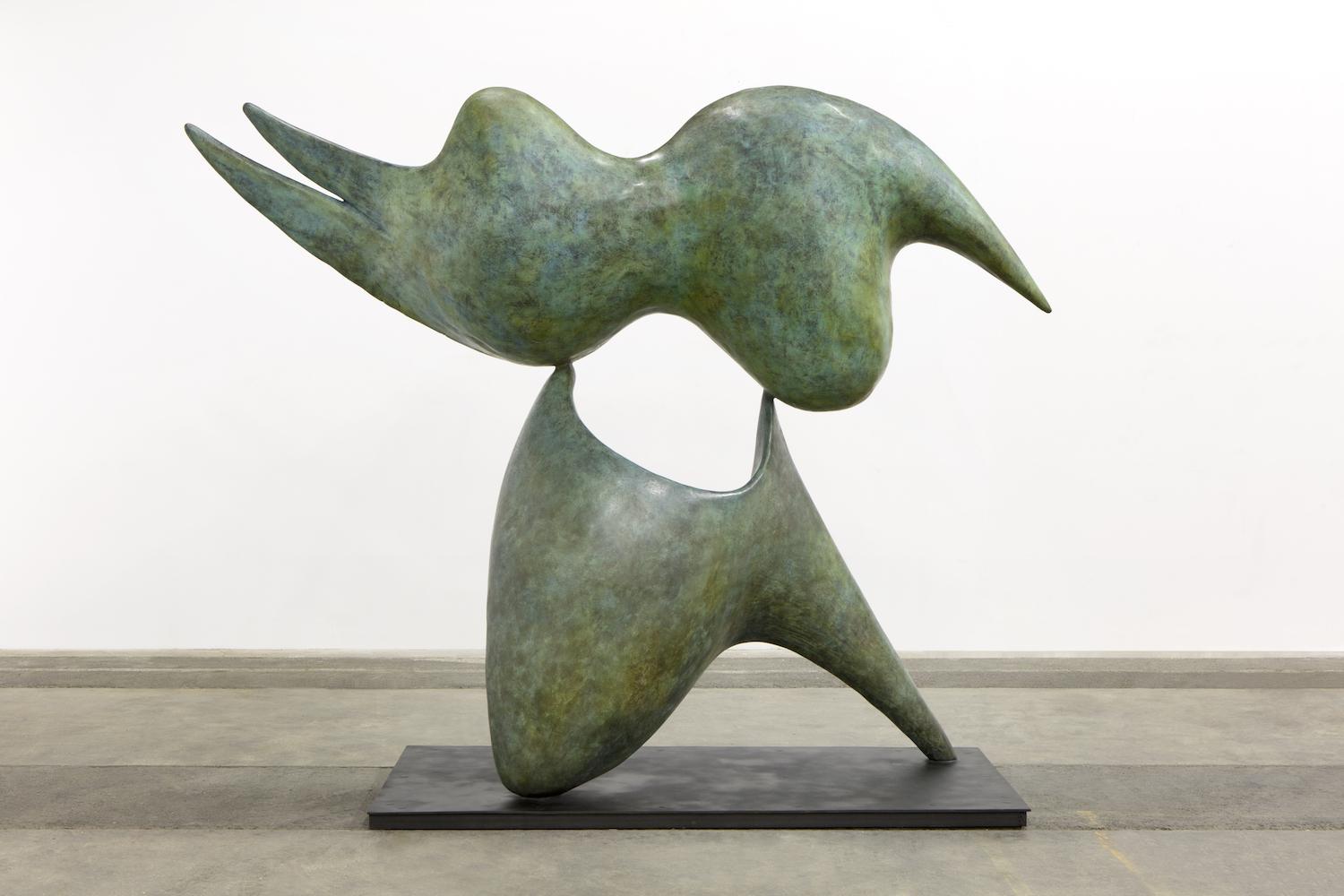
1. Camille Henrot’s OCPD at Münsterplatz
Winner of the Silver Lion for most promising young artist in the 2013 Venice Biennale, Camille Henrot is inspired by anthropology, Japanese manga, and the offbeat things she’s bought on eBay. Widely exhibited since making a splash in Venice, the multidisciplinary Paris-born, New York–based artist is showing three new sculptures presented by her three galleries—Kamel Mennour, König Galerie, and Metro Pictures—in Münsterplatz. One of her works, the bronze OCPD, presents two abstract forms, with one balanced over the other like dancers performing a pas de deux. Alluding to obsessive-compulsive personality disorder (OCPD), the whimsical work illustrates the pressures that artists have in constantly trying to get something just right.
Recommended: The Ultimate Art Insider’s Guide to Basel, Switzerland
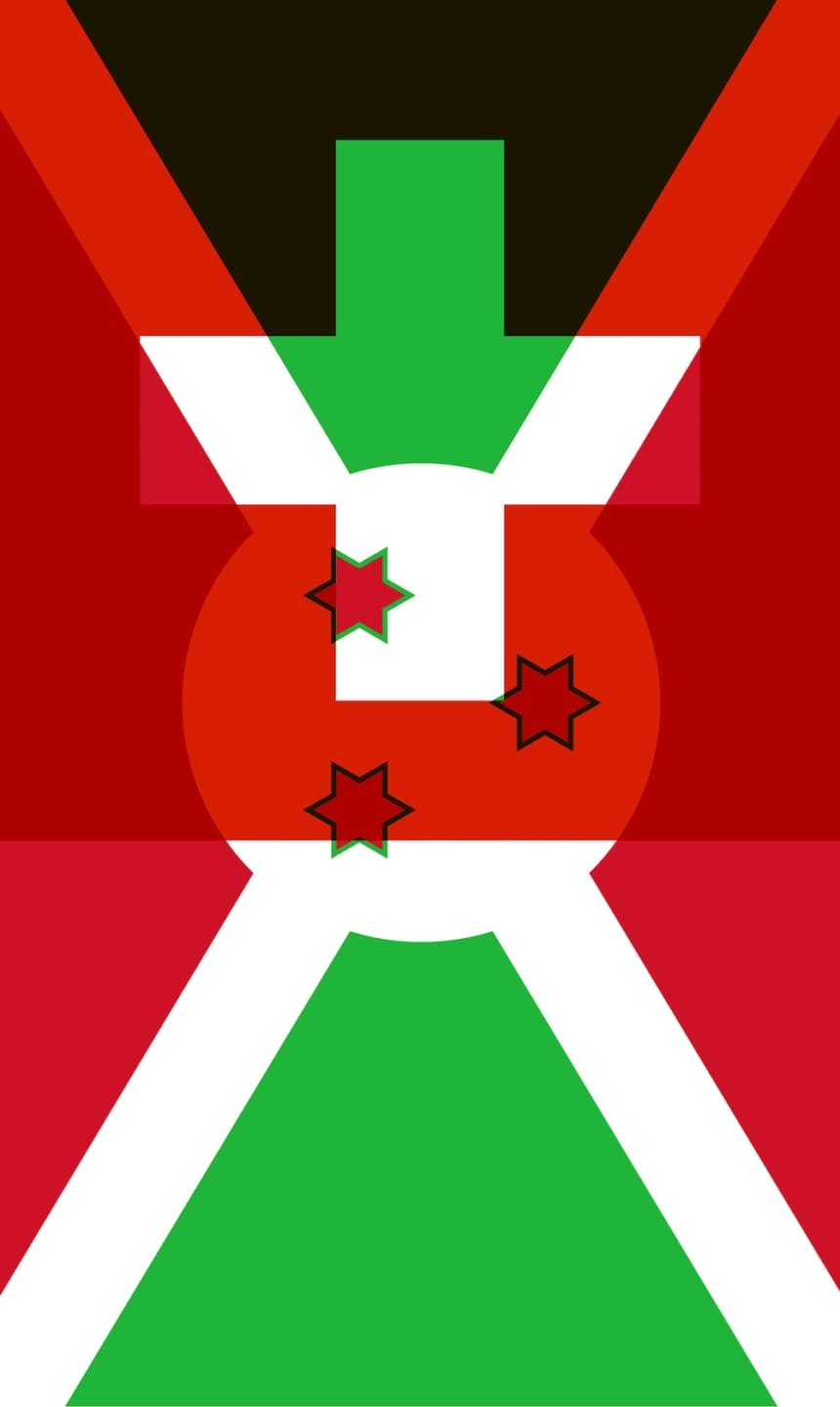
2. Pierre Bismuth’s Abstractions (Switzerland/Burundi) at Münsterplatz
A French conceptualist living and working in Brussels, Pierre Bismuth appropriates and confounds national identities with his new layered flags series, titled “Abstractions.” Commenting on peoples from developing nations and conflict zones that are migrating to Europe, the artist is superimposing the designs of flags from two countries and flying them in Münsterplatz. One flag symbolizes a migrant’s country of origin, while the second set of colors represents the host European country—with the one from the series depicted here uniting the East African nation of Burundi and Switzerland. Conceptually campaigning for global citizenship, Bismuth proposes the notion of equality for everyone in the world, which is a lofty yet genuinely abstract idea.
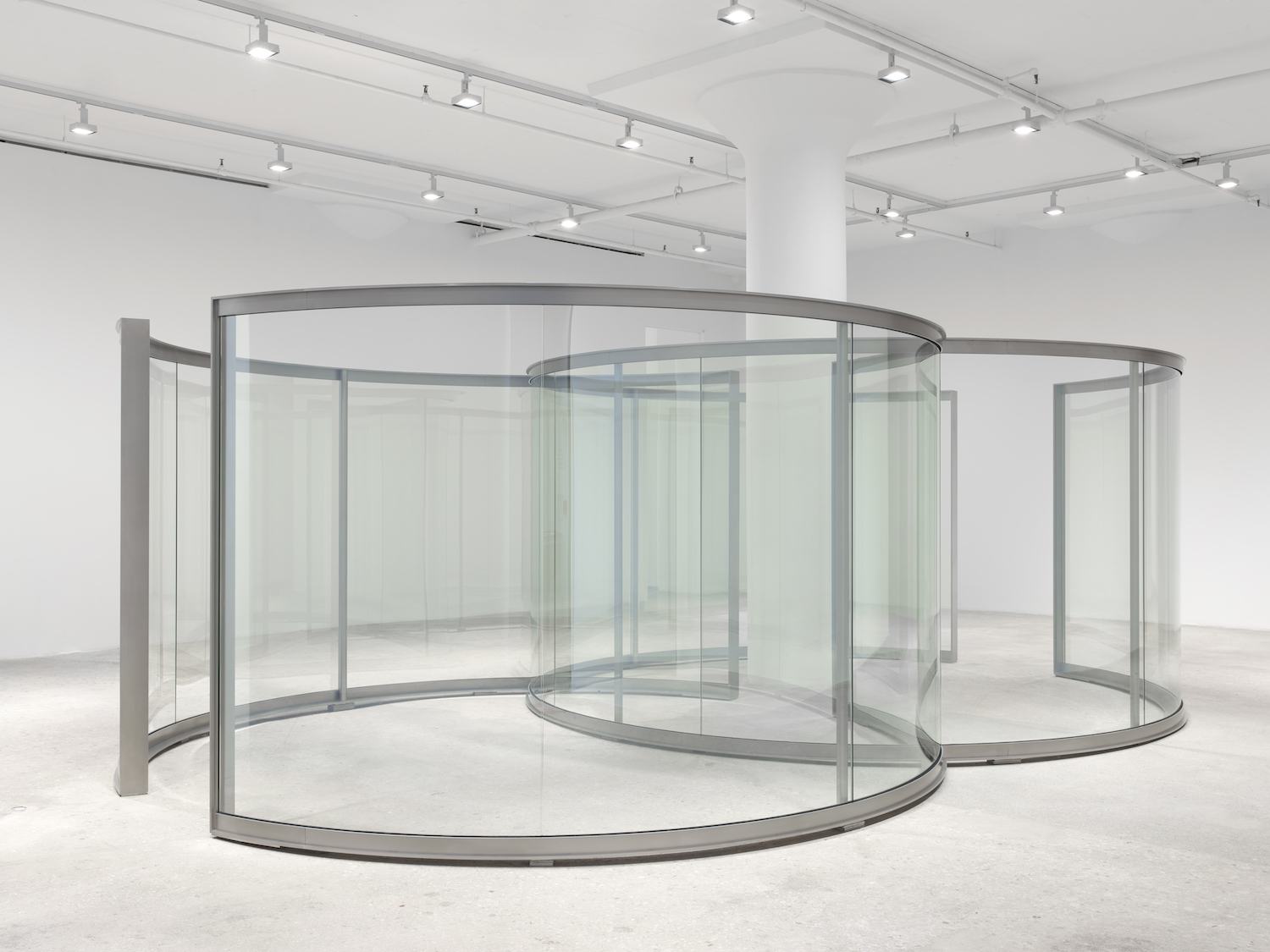
3. Dan Graham’s Dancing Circles at Münsterplatz
Minimal in appearance yet complex in construction, Dan Graham’s Dancing Circles offers an arena for contemplation and performance. Both clear and reflective, the 77-year-old American artist’s glass-and-steel structure isolates the visitor in the surrounding environment while forcing them to interact with a ghostly, mirrored self. When occupied along with others (there are two entrances to the interlocking circular forms), the glass presents the opportunity to examine one’s self in relation to people of different nationalities and from all walks of life. But when standing empty in the city square, the pavilion becomes the epitome of pure architecture—a glass house that could be a portal to anywhere.
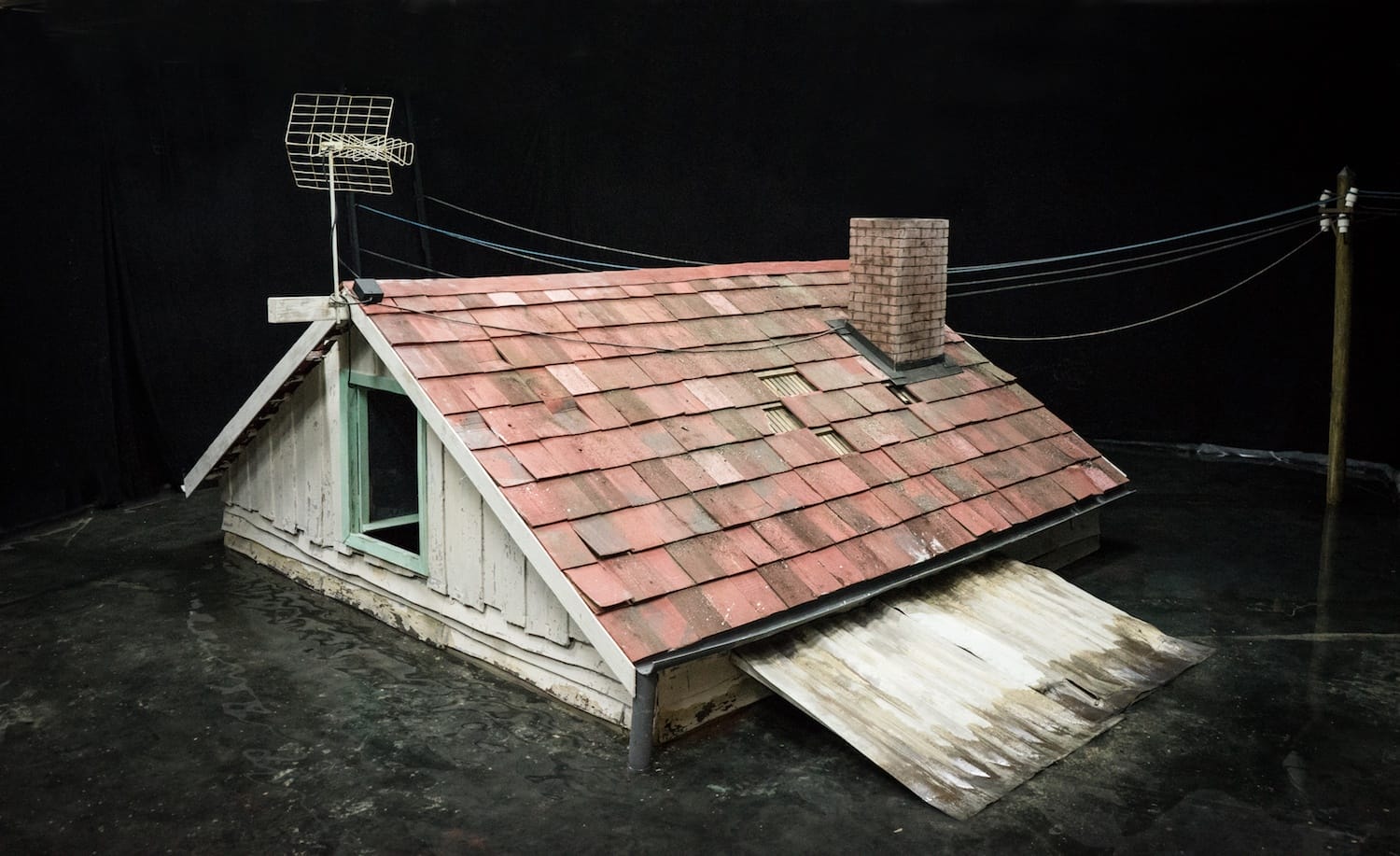
4. Rinus Van de Velde’s Prop, Flood, Roof at Falkensteinerhof
Celebrated for his monumental charcoal drawings and theatrical stage sets, Rinus Van de Velde creates realistic scenes that enchantingly depict an imaginary universe. While the Belgian artist’s graphic drawings often capture art-historical characters from the past in new utopian realms, Van de Velde’s constructed decors usually serve as scenarios for his colorful tableau vivant photography and film. He created 17 life-size sets for a new movie, which debuts in September, and is presenting one of them—titled Prop, Flood, Roof—in the atrium of the Falkensteinerhof on the Münsterplatz. The sculptural film set simulates the roof of a house that serves as a refuge after a flood. Taking a peak at the artist’s popular Instagram page, there’s a picture of him filming a scene of a young couple seeking shelter from the storm atop his lifelike wood-and-cardboard home—but in Basel the installation becomes a site for the visitor’s own projections.

5. Laurent Grasso’s The Owl of Minerva at Antikenmuseum Basel und Sammlung Ludwig
A French artist with a fascination for science, philosophy, and paranormal phenomena, Laurent Grasso makes films, sculptures, paintings, and photographs that transport the viewer to mysterious places. Often creating site-specific installations for museums that engage aspects of their collections, the artist subverts history for scenarios of his own making. At the Antikenmuseum, Grasso places a selection of his own artworks, including The Owl of Minerva, in dialogue with the museum’s collection of antiques. His monumental abstract owl, carved in a precious yellow-orange onyx, captures the silhouette of the Roman goddess of wisdom’s animal companion. A symbol of knowledge, the sculpted bird acts as a guide to the tale the artist weaves with historical objects that he gathers from the institutional racks and enigmatically displays anew.
Recommended: 5 European Artists Who Are Taking New York by Storm
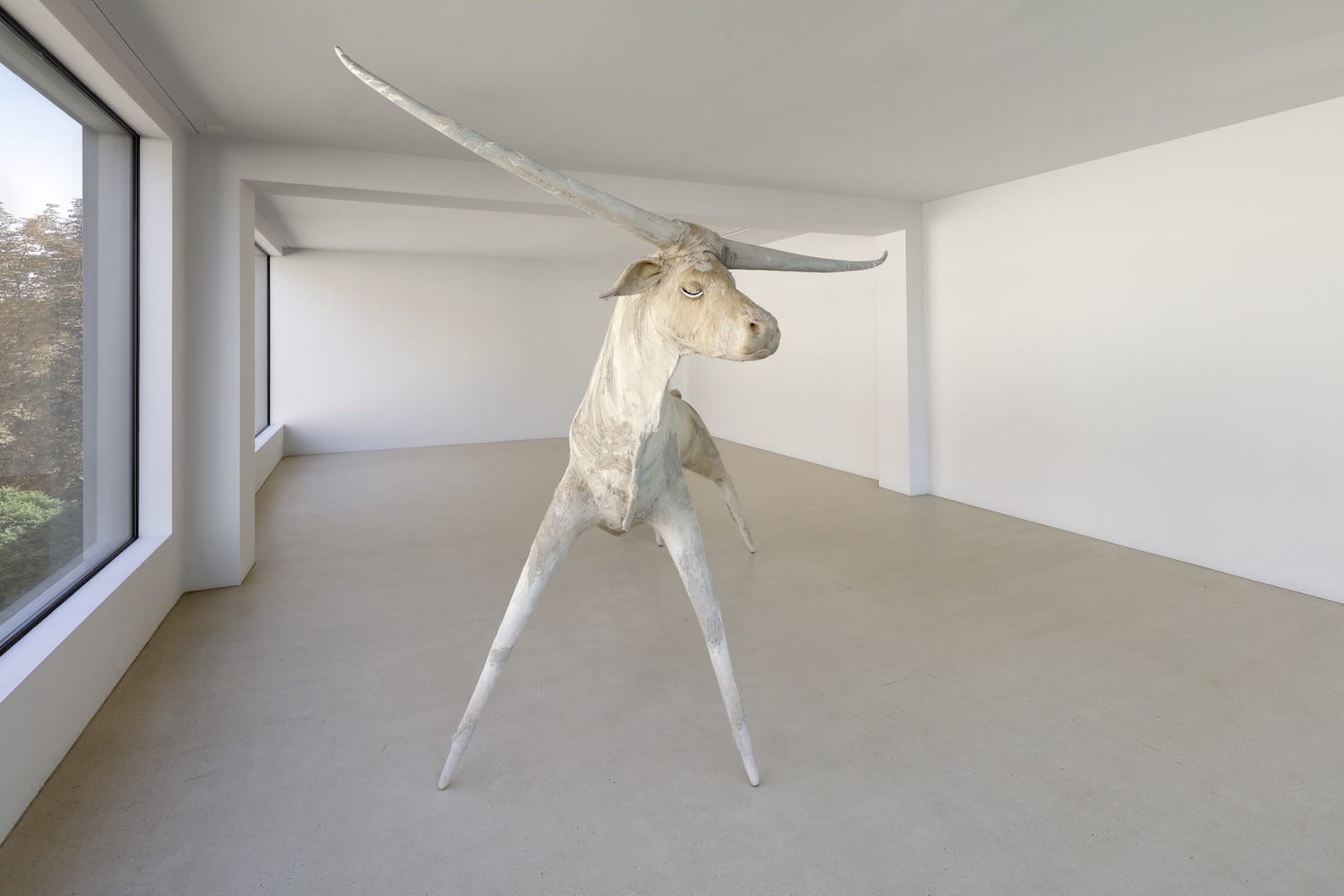
6. Paweł Althamer’s Ochse at Antikenmuseum Basel und Sammlung Ludwig
Constructing a mythology of another sort, the Polish sculptor and performance artist Paweł Althamer presents a massive imaginary ox made from organic materials in a different gallery at the Antikenmuseum. Drawn from one of the artist’s dreams, the ancient auroch (an extinct species of large wild cattle that inhabited Europe, Asia, and North Africa) relates to the beasts of prehistoric times that we primarily know through wall drawings in hidden caves. Made from such organic materials as fur, leather, wasp hives, coconuts, and seashells, the surreal white creature has an elongated body and protruding horns. Oddly hoofless, Ochse stands erect in the museum’s collection of Etruscan, Greek, Roman, and Egyptian sculpture—a fitting place for Althamer’s fictional bull.
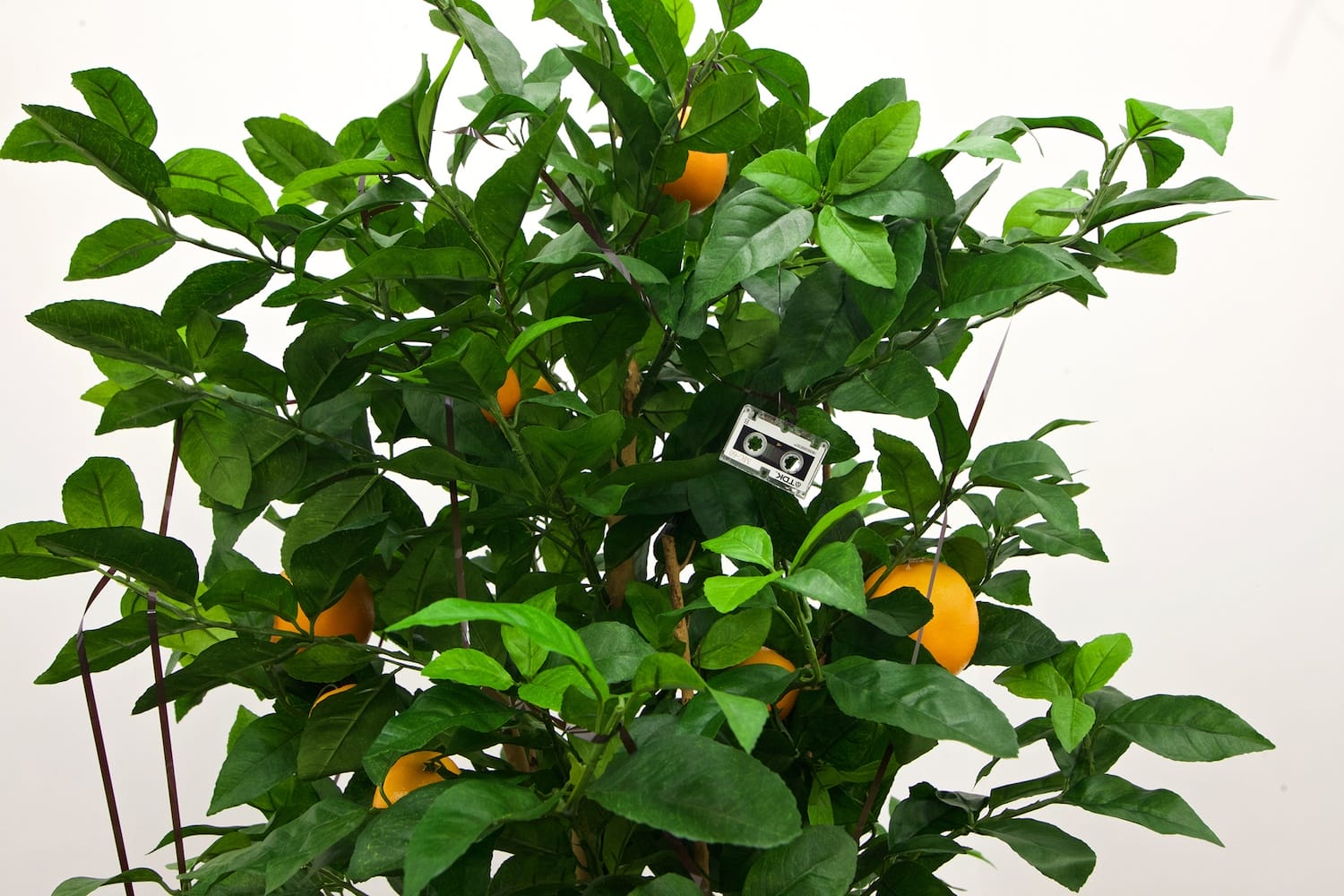
A Beirut-based Jordanian artist who often works with sound and found objects, Lawrence Abu Hamdan comments on politics, borders, and human rights through his thought-provoking performances, videos, and installations. Journeying into the mountainous regions of Lebanon, Abu Hamdan—who has been shortlisted for the 2019 Turner Prize—discovered a mini cassette tape wrapped around a clementine tree to protect it from birds and insects. Collecting the tape from the tree, he harvested the voice of a man named Wissam (his last name was inaudible) who had recorded a text on taqiya, an Islamic judicial belief that disciples are permitted to conceal their religion when under threat of persecution or compulsion. Re-creating the setting at Basel’s State Archive, The Recovered Manifesto of Wissam [Inaudible] installation presents a cluster of fruits trees with exposed tapes and the spoken text but leaves it to the viewer to determine the veracity of the tale.

8. Hassan Sharif’s Copper No. 32 at Erasmushaus
One of the most celebrated contemporary artists in the Middle East, Hassan Sharif was a master of many styles and mediums. An Iranian-born artist who passed away in 2016 after living and working in Dubai, he brought a unique point of view to his performances, conceptual art practice, and self-taught handiwork. Using all types of found materials, Sharif made accumulative pieces that reference the repetition of objects put into effect by the Nouveaux Realists and the Arte Povera strategy of employing everyday objects to simple ends. Copper No. 32, which is cleverly being presented at Erasmushaus, an antiquarian bookshop in central Basel, depicts a cocoon-like construction of interwoven copper wire that oddly looks like it’s hiding a body. Obsessive in nature, the wildly woven elements give the impression that they could one day light up, blaze out, and let an inner spirit depart its physical form.